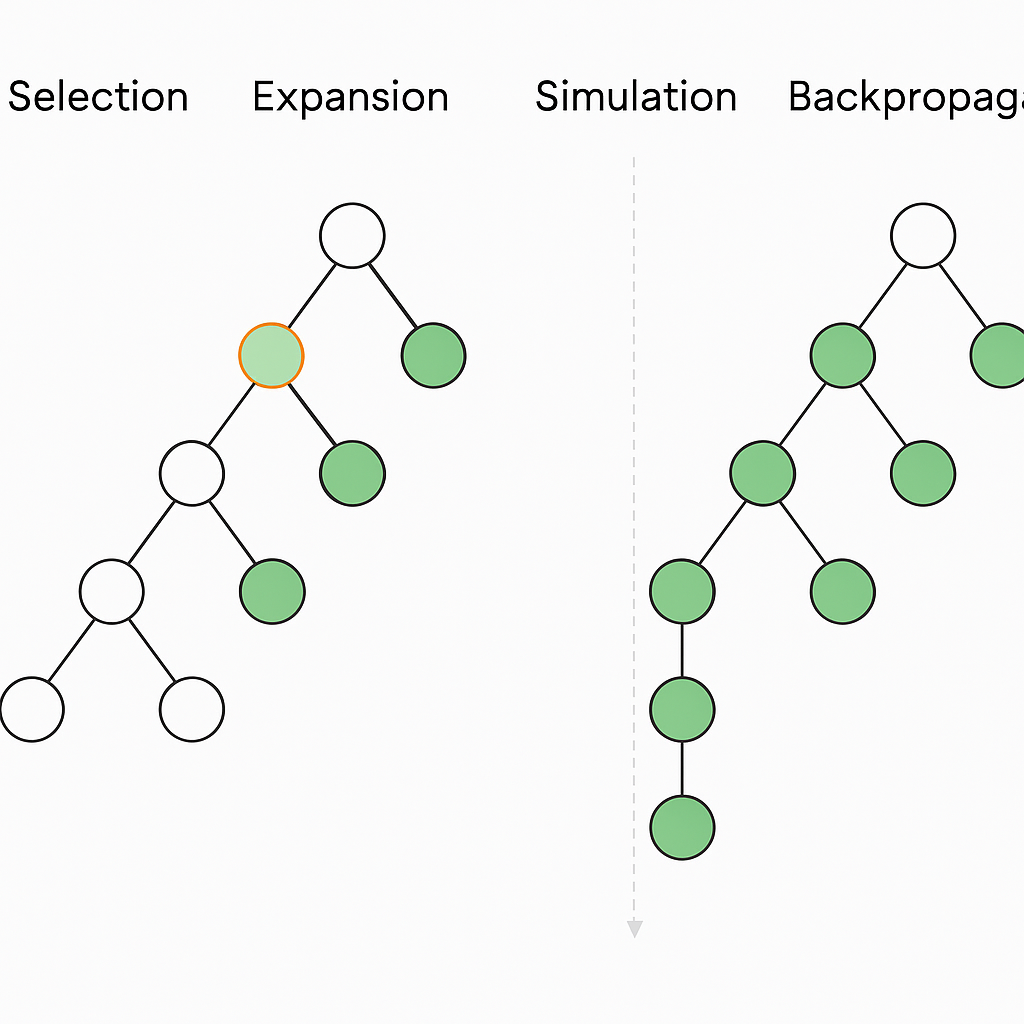Monte Carlo Method - From Statistics to Smart AI Agents

The Monte Carlo Method is one of the most powerful and versatile tools in the world of computation and statistics. Though it might sound like a gambling strategy from a casino, it's actually a rigorous and indispensable approach for solving complex problems through randomness and probability. In this blog post, we’ll explore what the Monte Carlo Method is, why it matters, and how it powers applications like game-playing AI through Monte Carlo Tree Search (MCTS).
What is the Monte Carlo Method?
The Monte Carlo Method refers to a class of computational algorithms that rely on repeated random sampling to obtain numerical results. The core idea is to simulate a system or process many times over and analyze the outcomes to make estimations or predictions.
Instead of trying to solve a complex problem analytically—especially when a closed-form solution is impossible—the Monte Carlo approach uses probabilistic simulation. This makes it ideal for high-dimensional, non-deterministic, or chaotic systems.
A Simple Example
Let’s estimate the value of π using a Monte Carlo method:
- Imagine a square enclosing a quarter circle.
- Randomly throw points into the square.
- Count how many fall inside the quarter circle vs. the whole square.
- The ratio of the points in the circle to the square approximates π/4.
Multiply that ratio by 4, and you get an approximation of π.
Why is it Important in Statistics?
In statistics, the Monte Carlo method is vital for:
- Simulating distributions: Especially when analytical forms are unavailable.
- Solving integrals: Particularly in high dimensions where traditional methods fail.
- Risk analysis and forecasting: By simulating scenarios with random variables (e.g., financial models).
- Bayesian inference: Monte Carlo methods underpin techniques like Markov Chain Monte Carlo (MCMC), essential for posterior sampling in Bayesian analysis.
Applications in Artificial Intelligence
The Monte Carlo method has had a profound impact on AI, especially in areas involving uncertainty, exploration, and decision-making.
1. Monte Carlo Tree Search (MCTS)
One of the most notable applications is Monte Carlo Tree Search, a heuristic search algorithm used for decision processes, particularly in games.
How MCTS Works:
MCTS is used to determine the best move by simulating many random playouts of a game. It balances two core principles:
- Exploration: Trying out less-visited branches to discover potentially better outcomes.
- Exploitation: Favoring branches that have historically yielded good results.
The process involves four steps:
- Selection: Traverse the tree from root to leaf using a selection policy (e.g., UCT: Upper Confidence Bound for Trees).
- Expansion: Add a new child node to the tree.
- Simulation: Run a random simulation from this new node to the end of the game.
- Backpropagation: Update the nodes on the path based on the result.
MCTS powered DeepMind’s AlphaGo, which defeated world champions in Go—a game considered intractable for traditional AI approaches due to its immense search space.
2. AI Agents and Planning
Beyond games, Monte Carlo methods help AI agents deal with uncertain environments and incomplete information. In reinforcement learning, for example:
- Monte Carlo methods can estimate the expected return by sampling episodes.
- They're useful in policy evaluation and improvement when the environment model is not known.
- Partially Observable Markov Decision Processes (POMDPs) often rely on Monte Carlo simulations for belief updates and planning.
Other Use Cases
- Physics: Simulating particle interactions.
- Finance: Valuation of derivatives, portfolio risk analysis.
- Robotics: Localization and mapping (e.g., Monte Carlo Localization).
- Medicine: Dose distribution modeling in radiation therapy.
Final Thoughts
The Monte Carlo Method’s brilliance lies in its simplicity and flexibility. By embracing randomness, it offers a practical way to approximate solutions to problems that are otherwise unsolvable. From theoretical statistics to high-performance AI systems, its impact is far-reaching—and as computing power grows, its relevance only continues to increase.